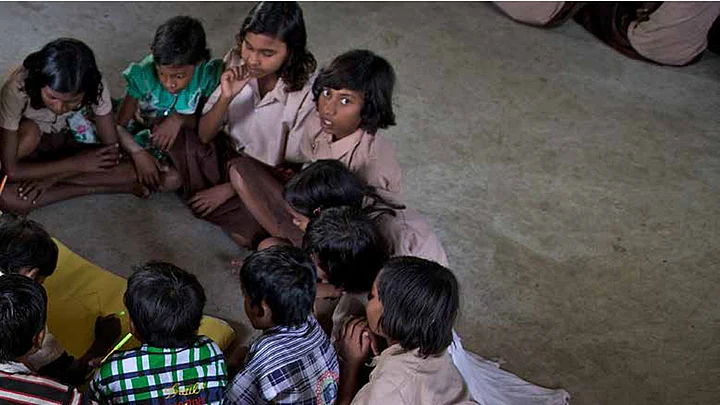‘Not so’ Shining India
- Recently released report by Save the Children reveals the sorry state of affairs at urban schools
- Right from pupil to teacher ratio to crowding numerous such issues behind abysmal learning outcomes
- Government needs to take corrective action immediately with an aim to cultivate skilled workforce
The notion that urban schools are better than rural schools is ill-founded, claims a report by the NGO Save the Children.
According to the report, titled ‘Forgotten voices, the World of Urban Children in India’, “Triangulation of data from Census 2001 and 2011 with the 7th and 8th All India Educational Survey shows that the notions that urban schools are better than their rural counterparts with regard to availability, quality of education, general governance, quality of human resources, etc. are ill–founded.”
The report goes further to suggest that the proportion of schools without a headmaster in urban areas is significantly higher than the ones in rural areas. Besides, the number of classrooms with a student-to-teacher ratio above 30 (primary schools) is higher in urban schools than in their rural counterparts.
Sorry State of Affairs
The Right to Education Act pegs the ideal pupil-teacher ratio (PTR) at 30:1 for favourable learning levels in classrooms, beyond which learning levels start degrading. A 2006 study conducted among 766 lower primary schools in East Karnataka by the Azim Premji Foundation revealed that performance of schools dropped sharply as PTR increased above 30.
“The school in our locality has classes only up to Class 8 and the high school is located at a distance which is not walkable. Therefore, most girls are forced to stop their education after Class 8 as it becomes expensive for parents to continue their schooling and don’t want their girls to travel long distance.”
—A girl aged 14 from a slum in Govandi, Mumbai (Save the Children report)
This signifies that sorry state of education in urban schools. The very notion that urban schools fare well than their rural counterparts is also blown to smithereens as one surfs through statistics in the just released ‘Save the Children’ report.
Depleting Levels of Learning
Why should it bother us? Though the share of India’s urban to its total population constitutes 31% (Census 2011), urban India will constitute a 50% share in India by 2050.
All the quixotic notions of reaping the benefit of the so-called demographic dividend seem to be like a mirage when one starts connecting the dots; it is not rocket science indeed, for education is directly proportional to the quality of workforce India will churn out in the next 35 years.
The picture is grim even in qualitative terms. The recently released National Achievement Survey (2012) by NCERT reveals that Class 8 rural students outshone urban counterparts in Science and Mathematics. Bharat is shining for sure and more so when one compares the learning levels of students.
Class 5 students in urban areas showcase what one may refer to as stagnancy (little change in learning levels) when their achievements are compared in Mathematics, Language and Environmental Studies.
The Way Ahead
While the ruling NDA government goes gung-ho about the recently launched Skill India initiative, one wonders what kind of skill pool schools with depreciating learning levels will be able to provide. A two-pronged approach might certainly help in bringing things back on track.
Infrastructure is just one part of the problem, government schemes like Sarva Shiksha Abhiyan need to focus more on the quality of education so as to improve learning levels among students. Customisation might help, as the report suggests setting up of area-specific urban education cells for monitoring, which could be the first step towards plugging the loopholes.
As social activist and co-author of Save the Children report, Akhilesh Gautam puts it,
SSA as a composite programme for urban and rural areas was highly skewed in favor of education for children in villages, completely oblivious to the complexities of urban schools. The challenge of ‘out of school’ children in urban areas is far more complex than in the rural areas.
— Akhilesh Gautam, Indian Development Centre, an independent public policy think tank
Thus, the use of a single school building as double shift schools to accommodate more children should be avoided. Instead emphasis should be on facilitating ‘bridging and support classes’ in order to aid those students lagging behind academically.
One is reminded of a famous quote by Confucius, “If your plan is for one year plant rice. If your plan is for ten years plant trees. If your plan is for one hundred years educate children. ” For a government that slashed the school sector budget by 25%, the recent report by Save the Children should be a wake-up call.
